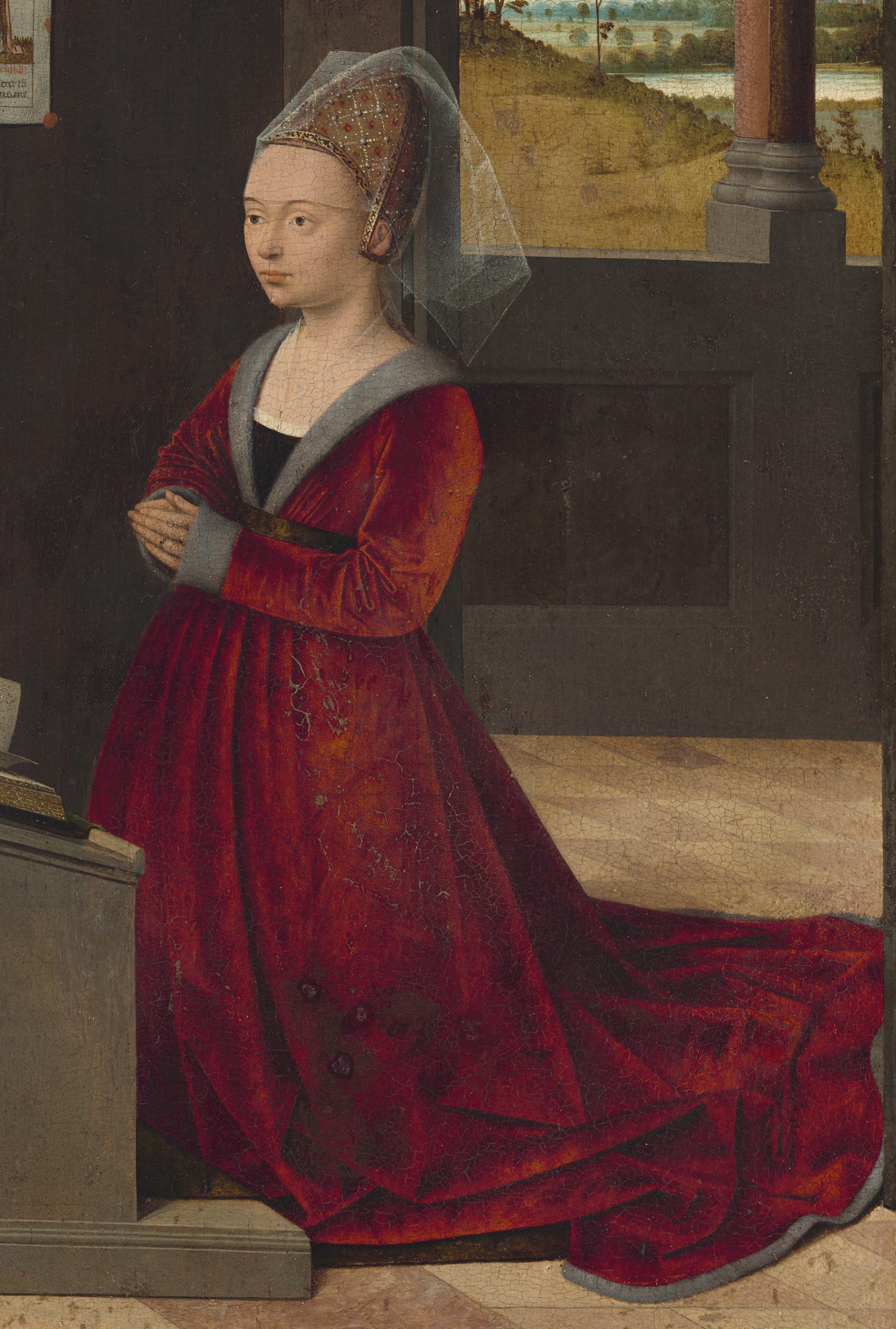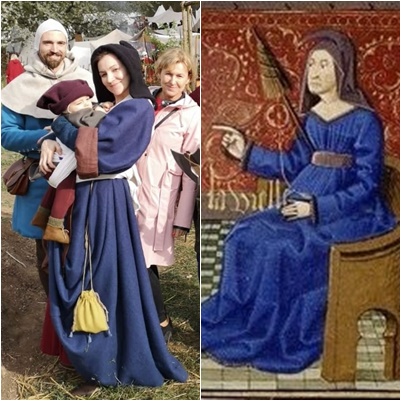
I decided to sew houppelande as a top layer over my 15th century outfit. I had a kirtle of lighter weight, a petticoat made of warmer linen, but I was still missing another warm layer, which I mosty substituted by a blanket and sitting by the fireplace. The question was what type of houppelande to sew. I liked every piece I saw (and I saw countless of them). Houppelande differed during the 15th century in the volume at sleeves and waist, draping at the waist, lining, neckline, type of fastening / binding around the waist, some have sleeve cuts, others train. In the end I chose a houppelande of the older type - wider, more voluminous.
What did I want to achieve?

MEMLING, Hans. The Donne Triptych
At first I liked the houppelande narrower both in the volume of the sleeves and at the overall width.
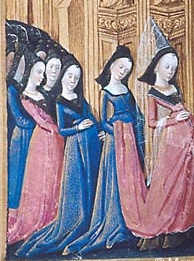
Book of Hours
Narrower houppelands were often lined with fur, sometimes the fur in the neck and shoulders was folded up forming a nice collar.

WEYDEN, Rogier van der. St John Altarpiece
Gradually, I began to like slightly wider sleeves and pleats over the bust.
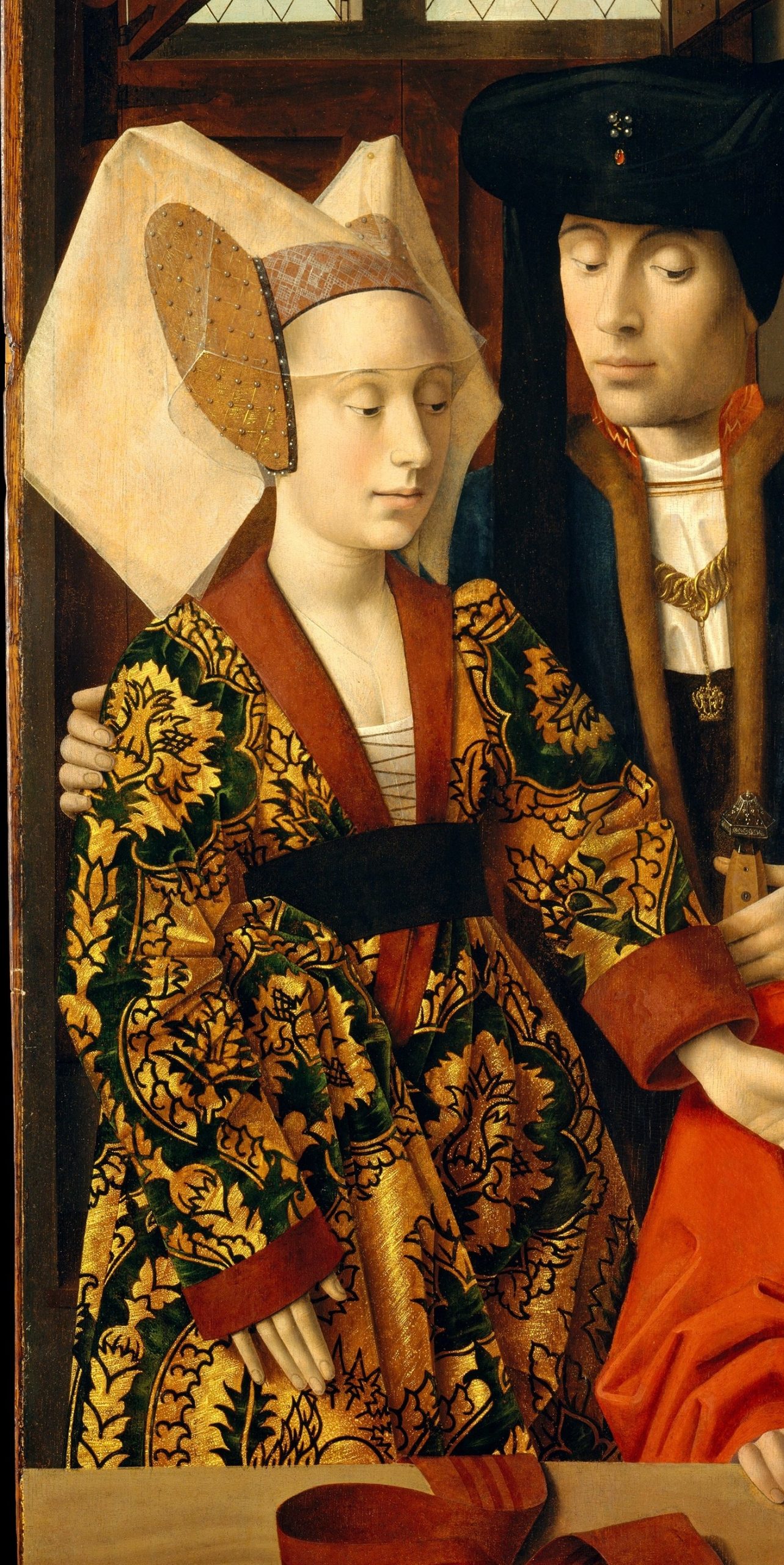
CHRISTUS, Petrus. Goldsmith in his Shop
Detail of one with a wide black belt - I originally made this belt from wool, but in the end I succumbed to a thin leather belt because it was much easier to hold and pleat the bust ((but I believe a black wide leather strap would serve just as well).
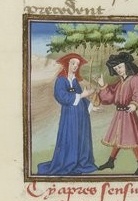
BOCCACCIO, Giovanni. Le Decameron
Detail from Decameron.
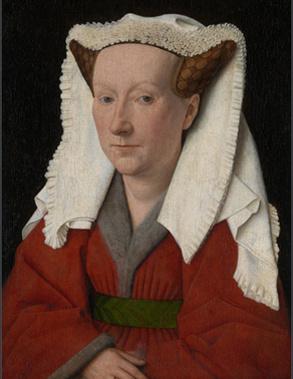
EYCK, Jan van. Margaret, the Artist's Wife
The wider the gown, the greater the pleating occurs in the chest area.
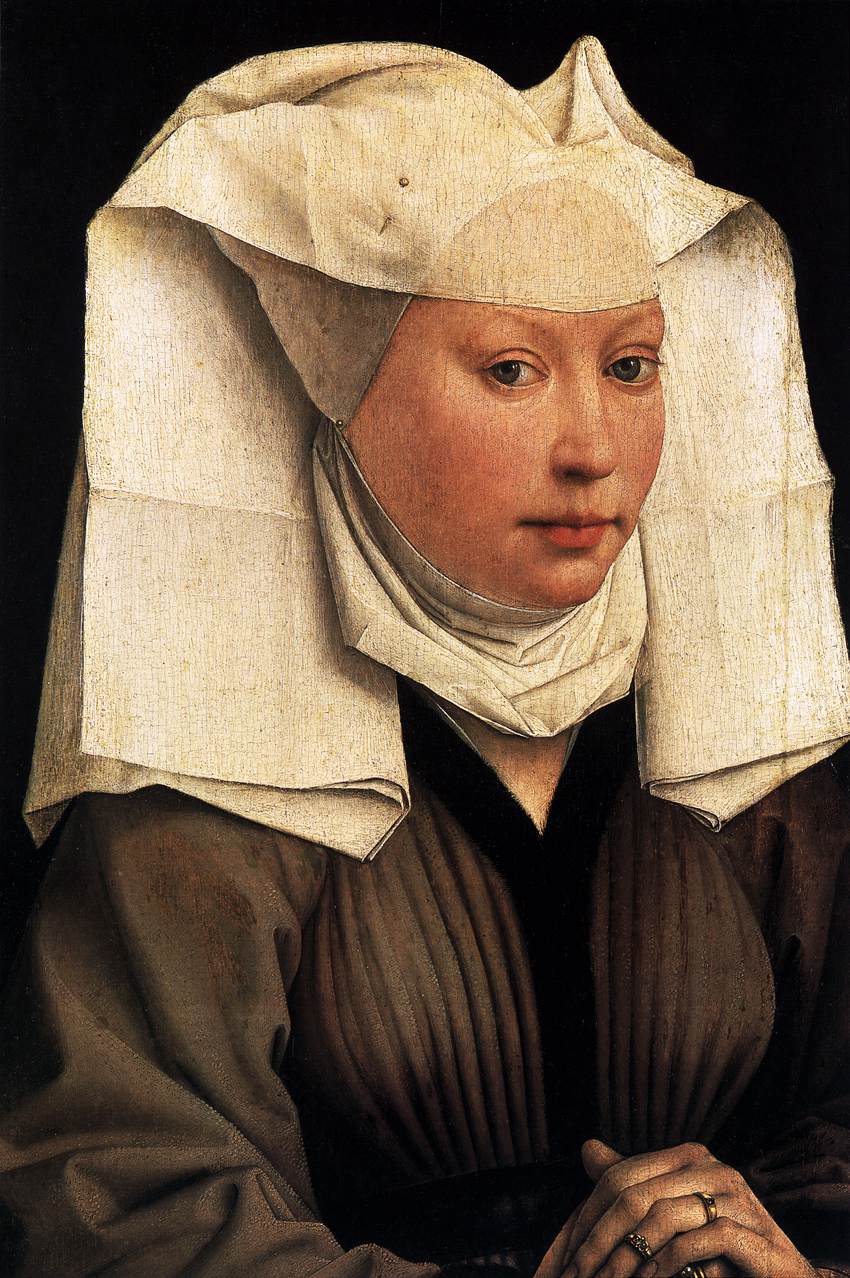
WEYDEN, Rogier van der. Portrait of a Young Woman
Houppelande with the beautiful neckline lined with fur, wide sleeves and probably also with wide bottom.
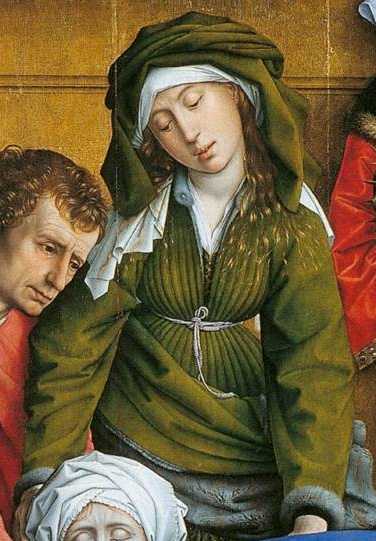
WEYDEN, Rogier van der. Deposition
Detail of an older type with a fured lining and a simple binding around the waist - I also tried this binding, but a thin leather belt was still more practical.

WEYDEN, Rogier van der. Seven Sacraments Altarpiece
And again - detail from Weyden and this time with image of dresses, which I reconstructed and wore under my houppelande, notice the lining of houppelande.

Ibid.
Detail from the same.
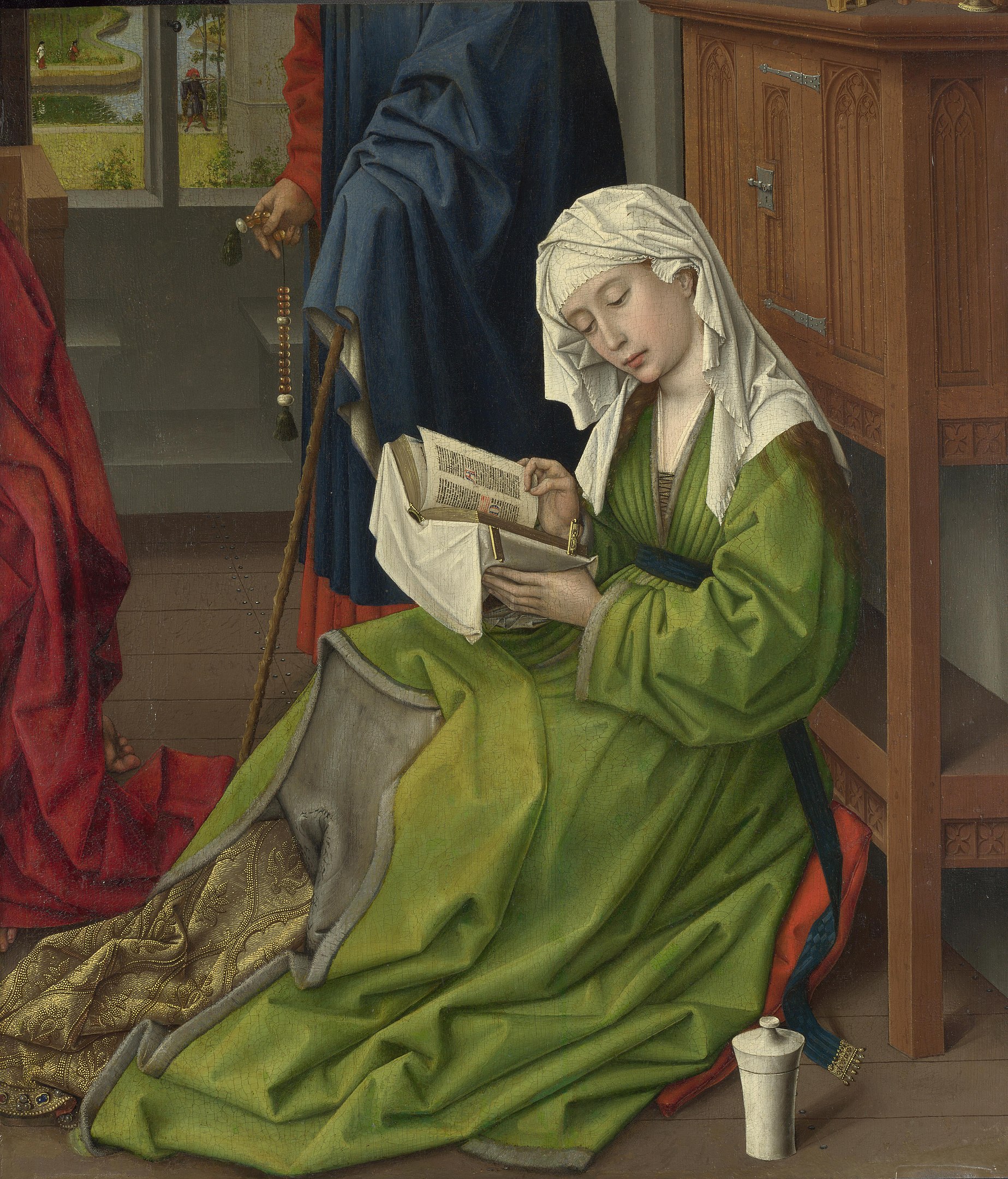
WEYDEN, Rogier van der. The Magdalen Reading
A similar houppelande from the same author, this time with a wide belt finished with a buckle.

WEYDEN, Rogier van der. Crucifixion Triptych
Detail of a gown with wide sleeves and cuts, I almost made them too!

EYCK, Jan van. Ghent Altarpiece
Detail of one with really very wide sleeves.
Step by step

After some experience with texts and patterns from Reconstructing History, I decided to buy their pattern/ instructions on their website. Pattern of houppelande is very simple to make and Reconstructing History always offers a clear description and historical development of costumes and this particular pattern offer a narrower and wider pattern. Initially I decided to cut the fabric for a wider houppelande and then to decide if I´ll make narrow version, I was rather indecisive, but I started to like wider ones and from a practical point of view I found it better - more comfortable for a tougher weather when you want to have more layers under it.
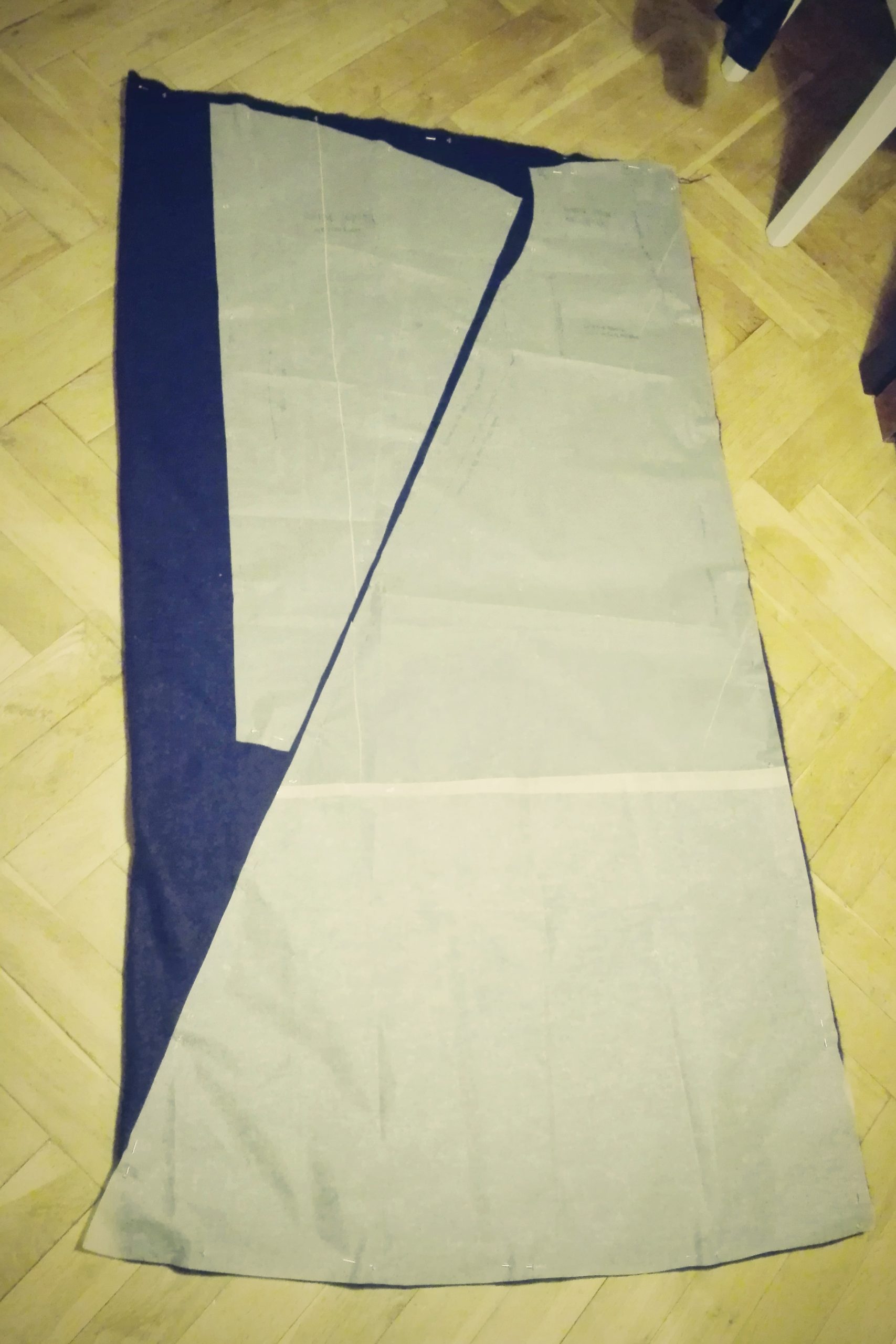
I chose a medium thick navy wool for the outer fabric. The pattern consists of two front body parts, one back, two side gores and wide sleeves.
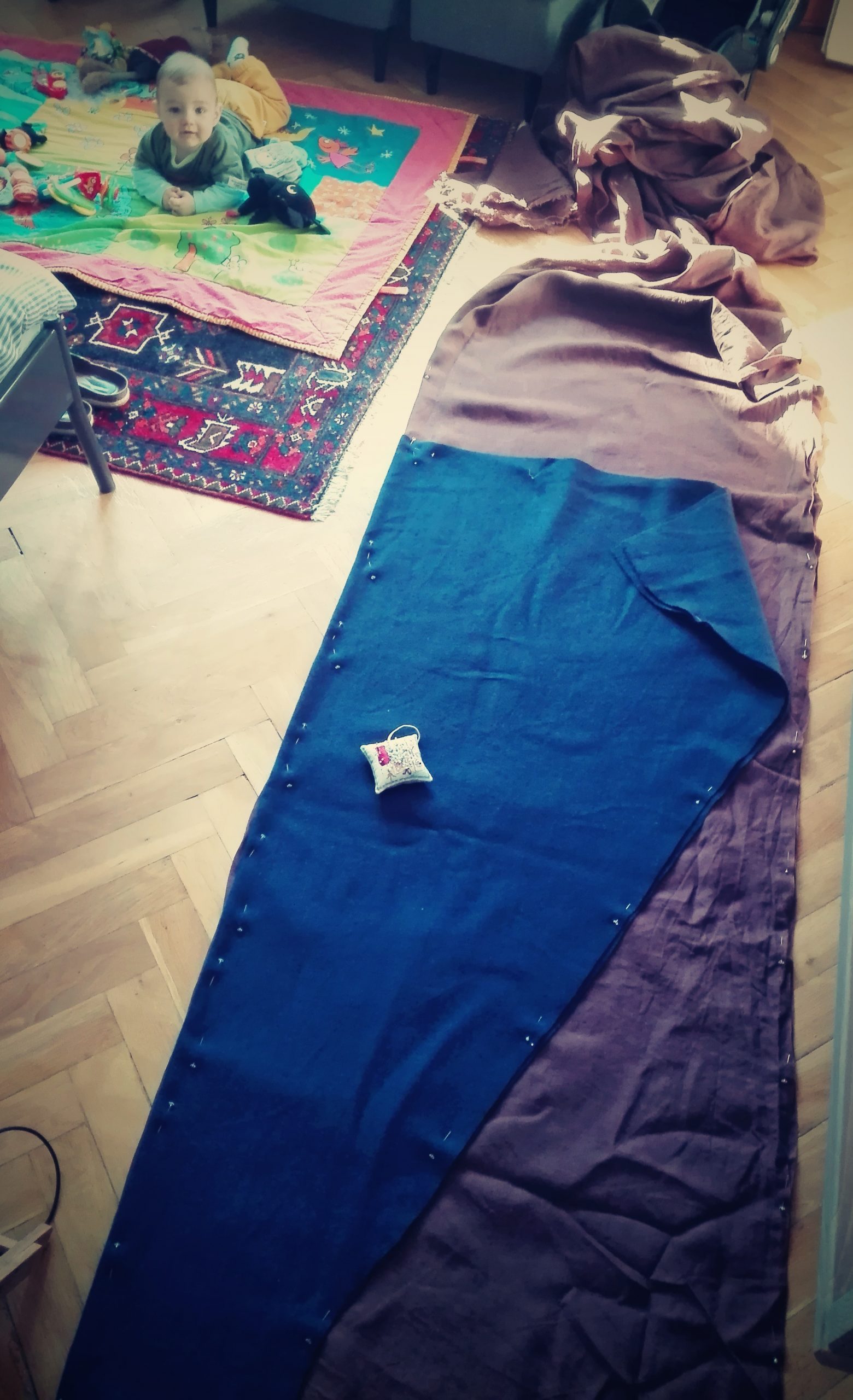
I chose a brown linen for the lining.

You could say that the gown was sewn in a few minutes because I made invisible seams by machine.
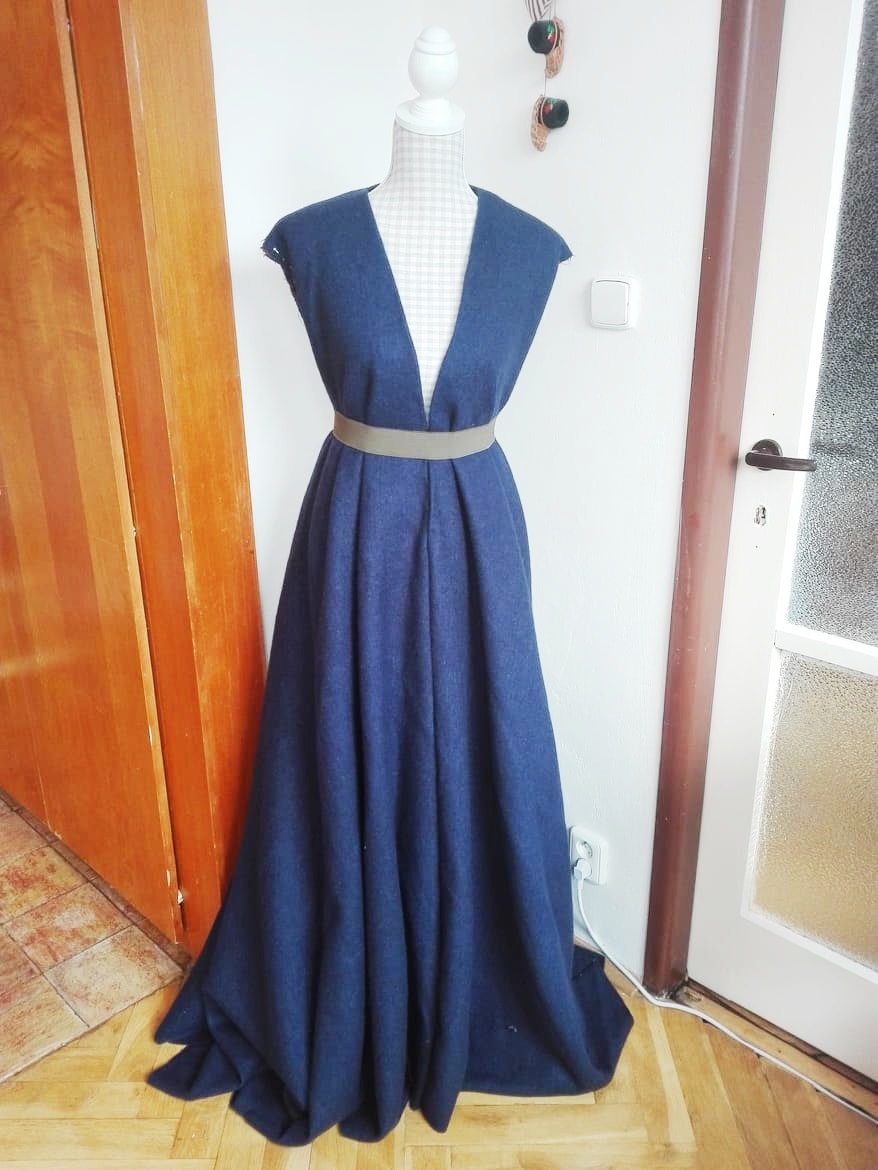
First result. When making it, I used a modern belt for faster manipulation, which perfectly substituted the appearance of wide belts of paintings that inspired me.
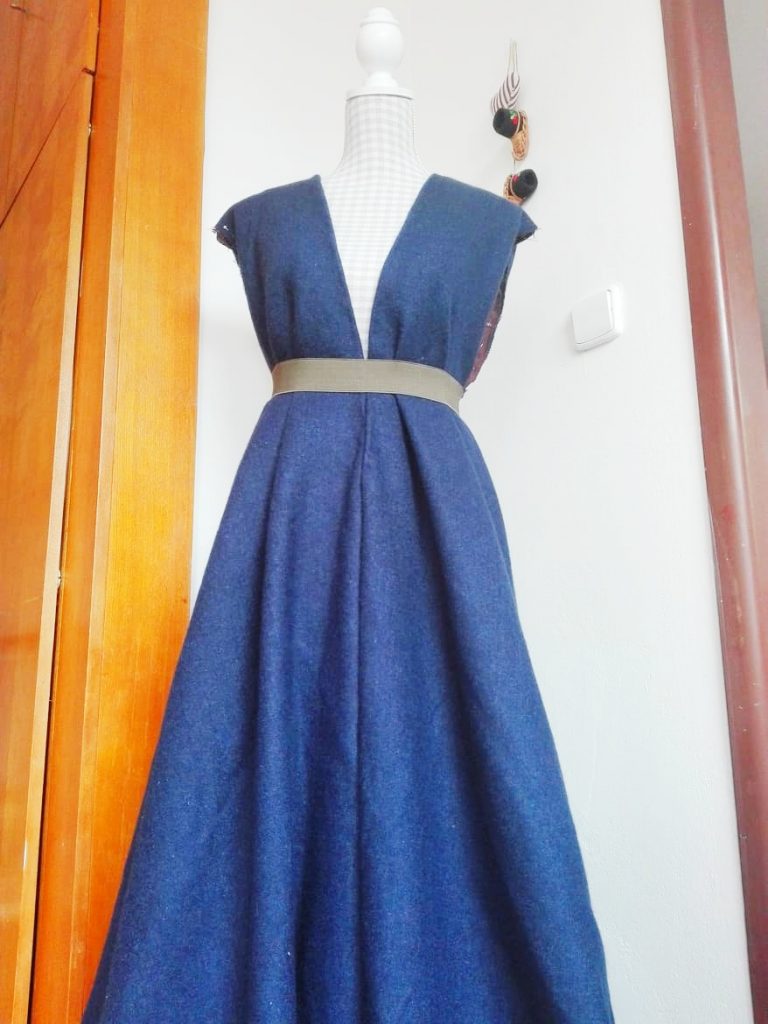
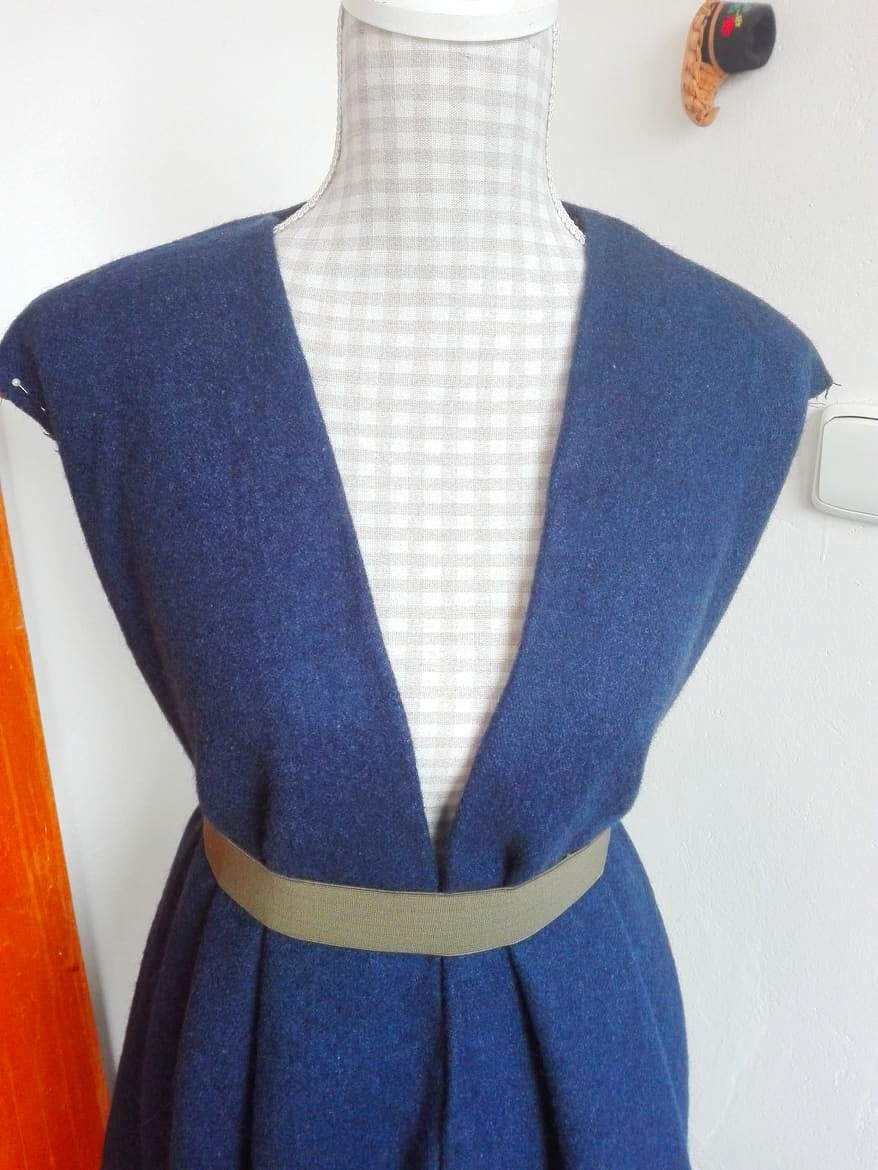
First tests of a gown without any shirring of pleats around waste and bust - this is easily adjusted later with a belt.

I first sewed the lining at the neckline. I admit that I did not follow the instructions from Reconstructing History too much in the sequence of tasks, but otherwise all the principles of sewing I do - it is their texts that help me to understand more construction than the pattern themselves.
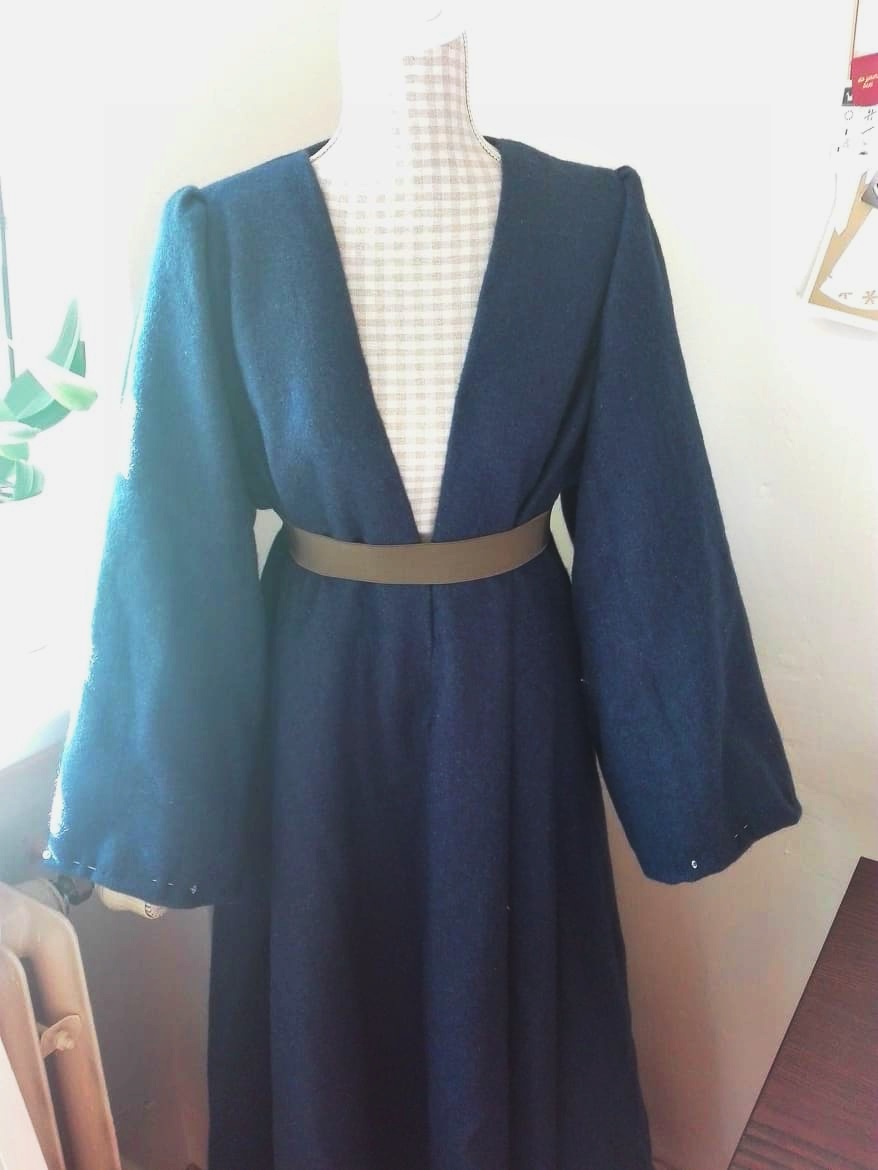
Then I pinned the sleeves. What was a mystery to me was the way the sleeve lining was stitched around the armholes. From the experience of sewing 17th century costumes, I connect the sleeve lining with the rest of the lining by a long strip that I sew around the armhole circumference. Nothing was mentioned in the instructions for this, and I did not find this information anywhere during making my houppelande. So I joined the lining in the way I do it for my costumes for the 17th century, but later I examined this detail in The Medieval Tailor's Assistant: Making Common Garments, 1200-1500, and in the passage about lining (p. 51), I found out that in this period, the lining of the sleeves was probably not sewn in this way, or rather I did not find anything about its sewing in the way I know from the 17th century in this book. However, it is the only publication in which I have been looking for this information so far and I will have to go even further.

Sleeves lined according to the method of lining in the 17th century.
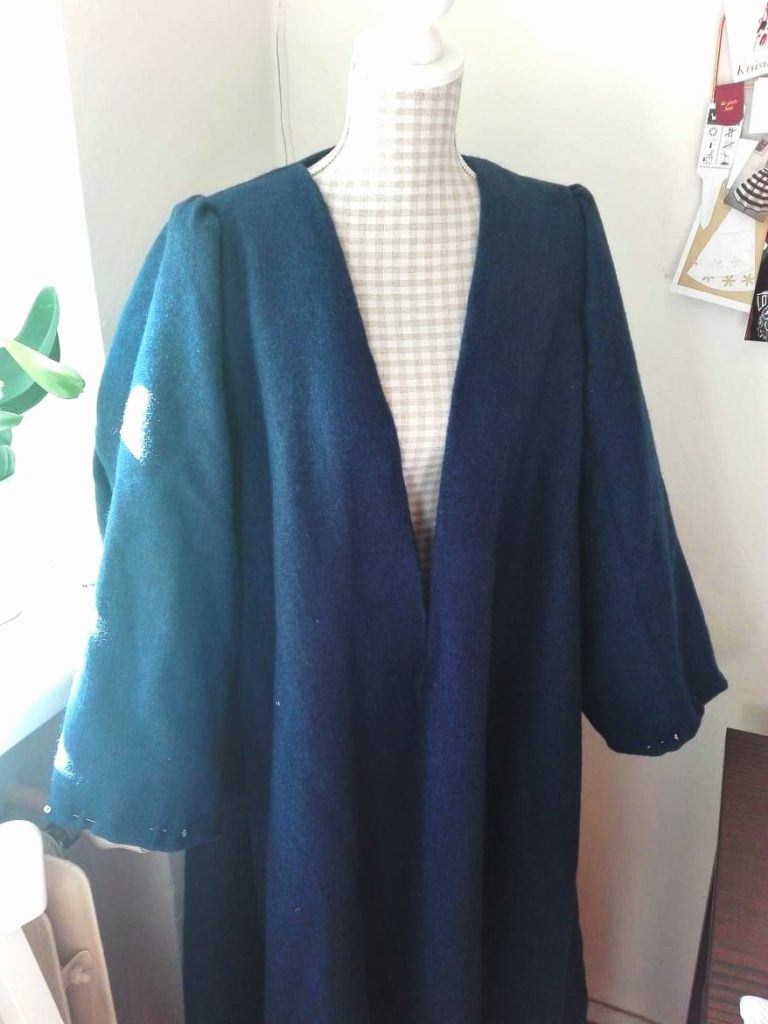
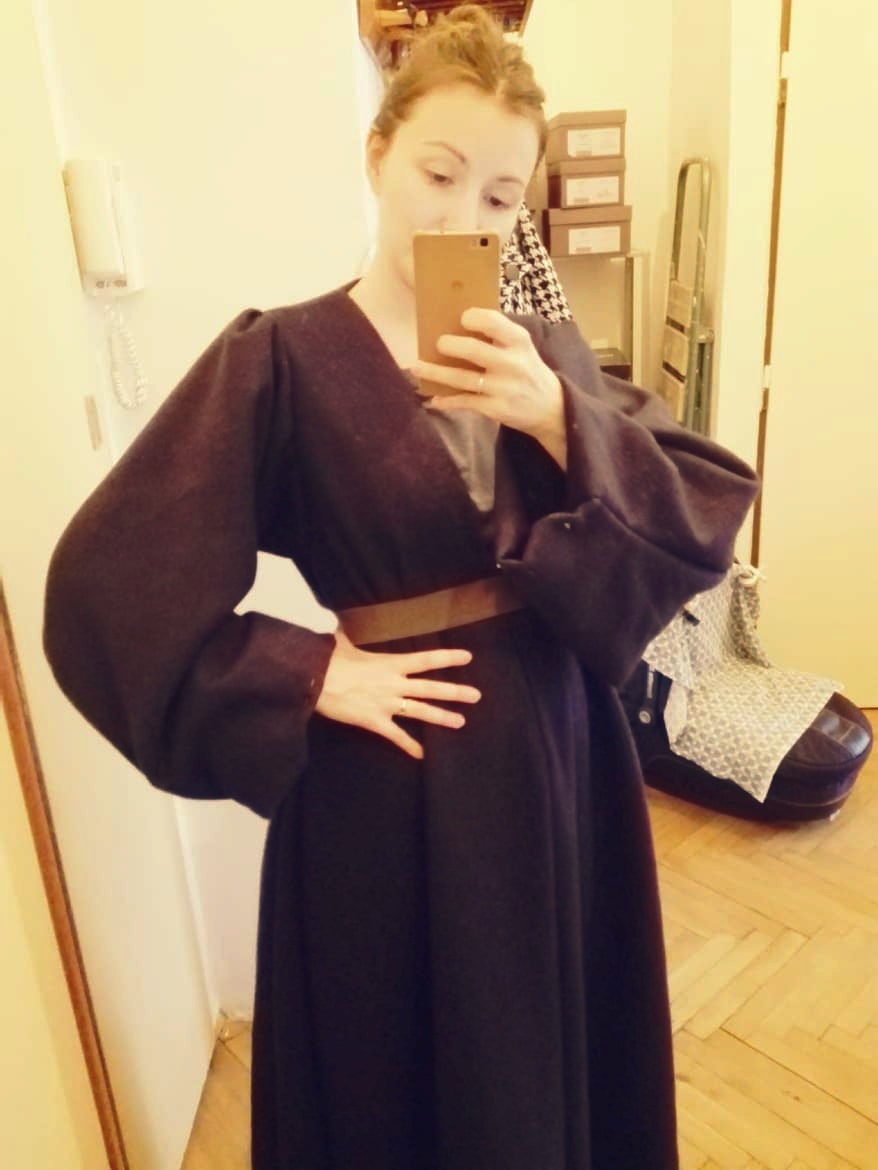
Testing the sleeves on the body. Everything was perfect - with such a wide dress is not too hard to get the size right.
The only thing left to do was to sew up the sleeves and to finish the hem of the lining on the sleeves and at the bottom of the dress. What was a bit demanding was the final reduction of length, which I had left slightly longer to be sure. Although I carefully measured everything several times on a mannequin, which is my size and height and checked everything on the ground when folding the dress, after pinning the edges, the dress was not evenly long everywhere on my figure and at my feet. Certainly the fabric behaves differently when it´s pinned and the pins pull it a little unevenly, but in the end I consulted with my friend a designer who sews a 50s style dresses and has a lot of experience with similar wide circuits - Gali, my sewing guru, advised me very carefully to measure the length from the waist line down on a mannequin (you can still ask someone to do it right on you) and measure the perimeter every 10 cm. It is a good to measure the lining and the top fabric separately - and really measure if everything is even. It may sound like a trivial task, but it wasn't with that heavy and wide dress, and I did it three times.

Done and done.
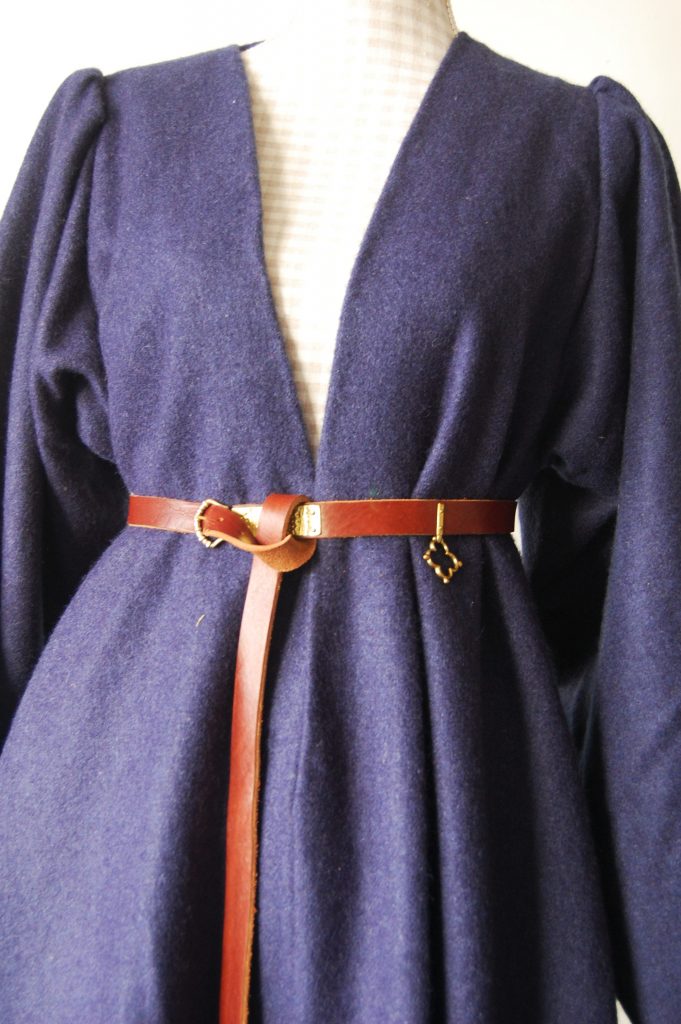
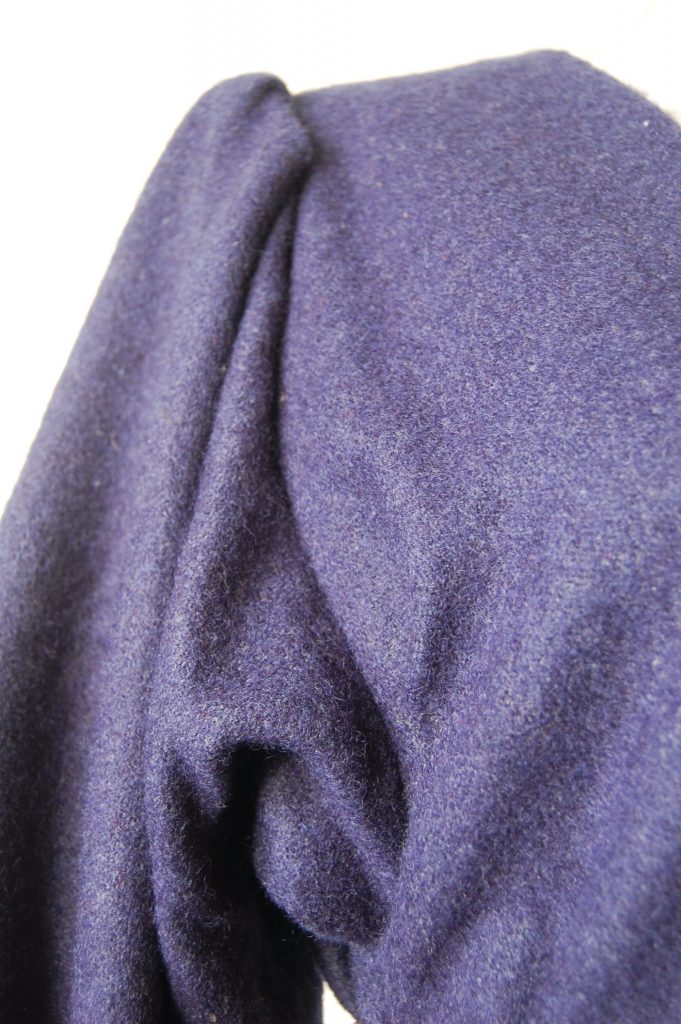

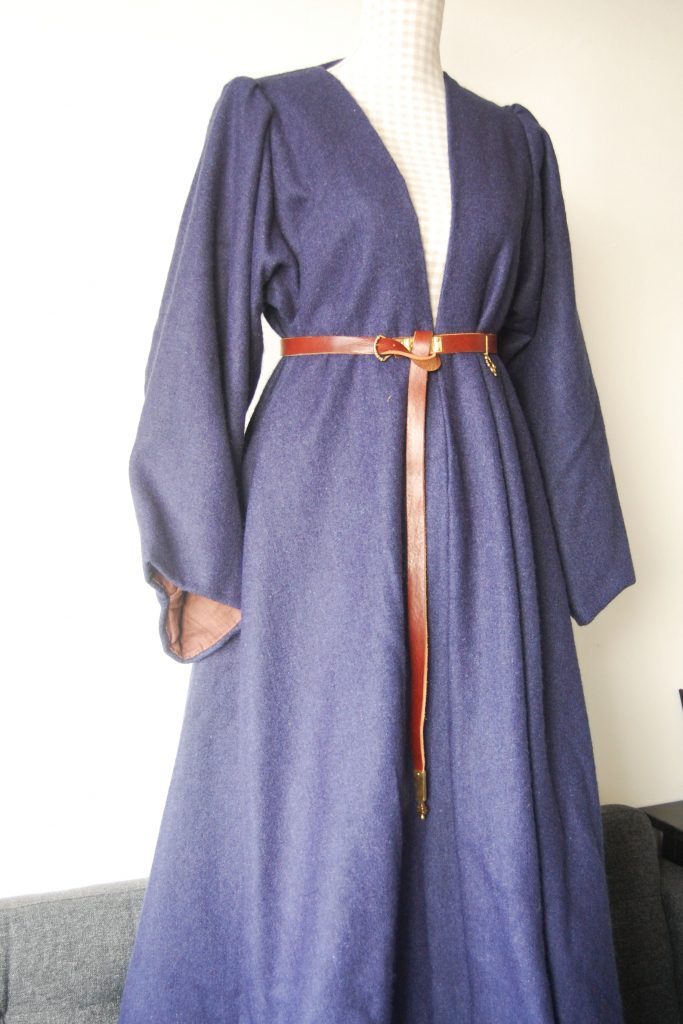
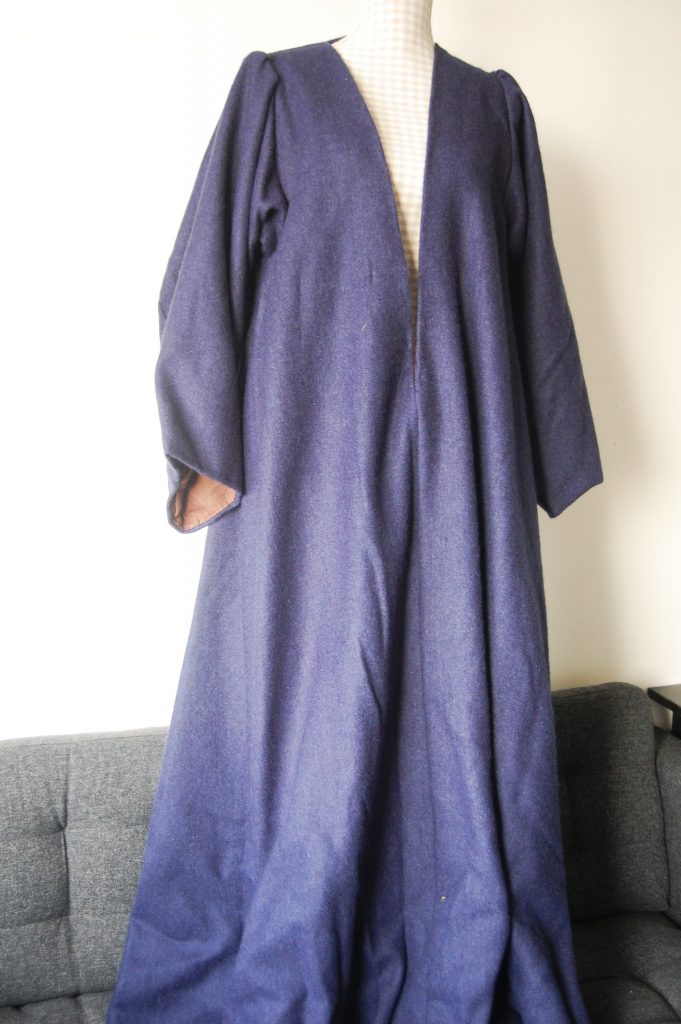
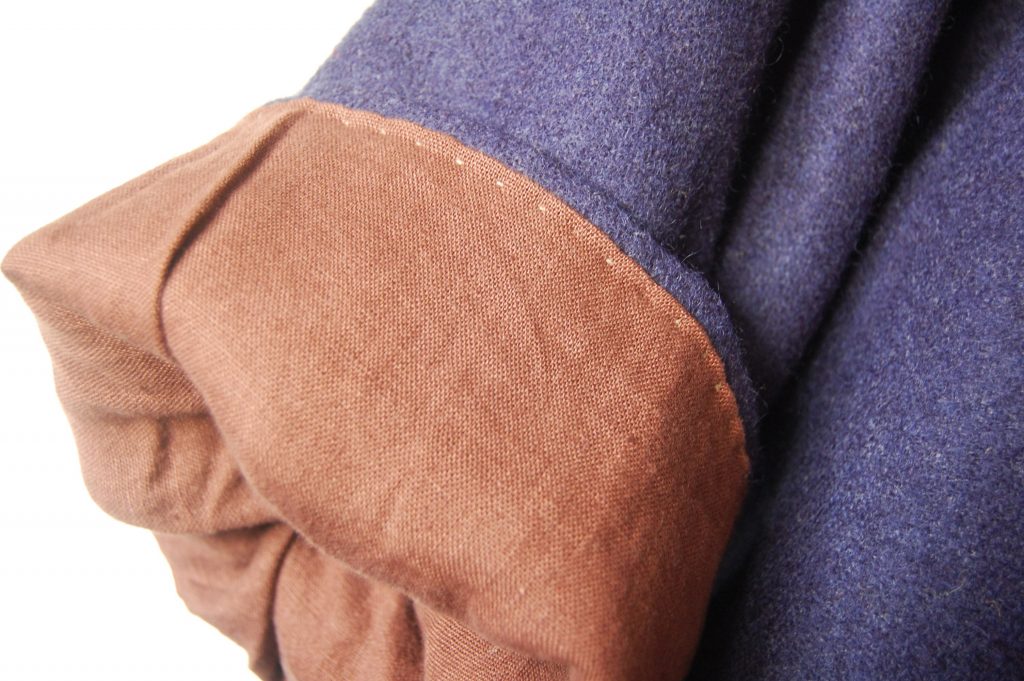
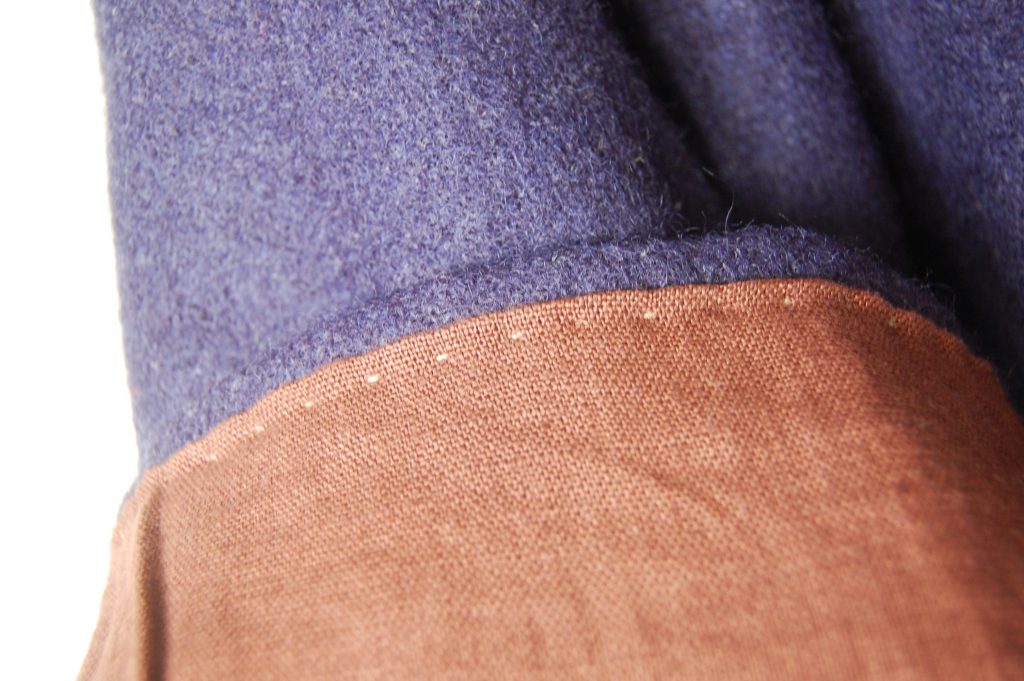
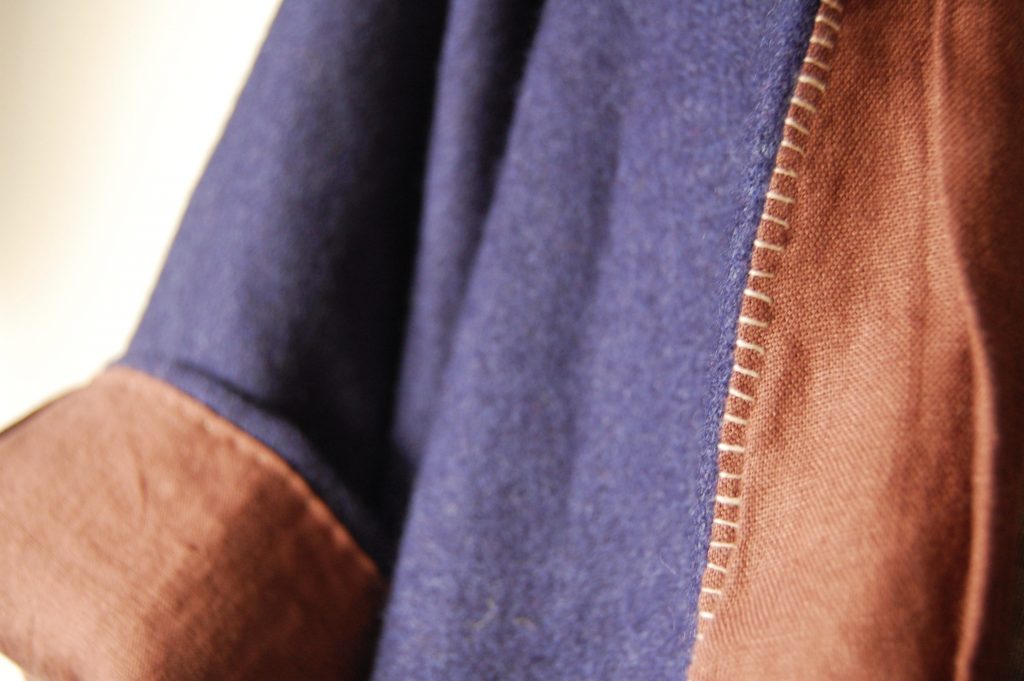


I wore houppelande for the first time at the event where I was carying an eight-month-old baby in a scarf for almost all day (more here). It proved to be very comfortable. What I wouldn't think of and Reconstructing History mentions is the need to hang the dress on a solid wooden hanger for a few days before wearing it. I let them hang for a week and the length of my dress was a little longer. It depends on how heavy is the fabric, but the wool that I used is quite heavy and it pulled out quite a bit in that week.
What did I use?
What will I do differently next time?
- I will measure the bottom edge of the dress before hemming straight on the mannequin from the waistline downwards, carefully every 10 cm - separately the lining and the top fabric, and really check that everything is even
- I will examine the period stitching of the sleeve lining
Highlights:
- Beside the fact that the gown is really very easy to sew (I would say it´s a project for beginners), it is worth mentioning the inner connection of the sleeve lining - I still have no idea how it was lined in the 15th century
- It is a good idea to hang the dress on a solid hanger for a few days (this will extend the overall length)
